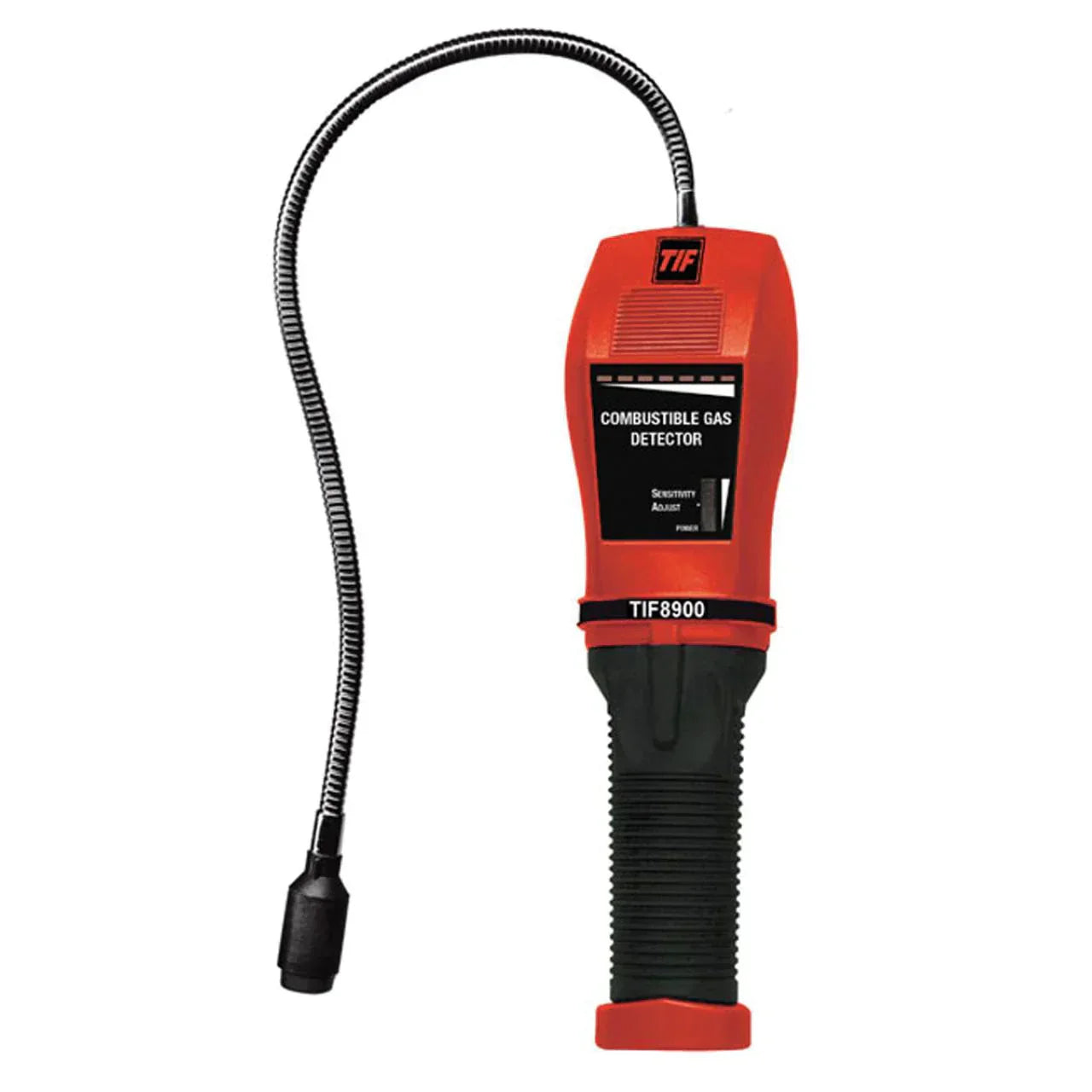All About Refrigerant Leak Detection System & Aircon Gas Leak Detector
Refrigerant leaks are one of those jobs many HVAC techs dread – they can be slow, fiddly, and hard to pin down without the right tools. But with a good refrigerant gas leak detector and a simple process, you can find leaks faster, protect your client’s system, and stay on top of safety and environmental rules.
This guide walks through how refrigerant leak detectors work, different sensor types, what to look for when buying one, and a few proven detector options from HVAC Shop for both tradies and serious DIYers.
Why Early Refrigerant Leak Detection Matters
Refrigerant leaks are common in HVAC systems because there are so many potential weak points – flare fittings, brazed joints, valves, and service ports. Some leaks are tiny (around 1 oz per year) and barely affect performance, while others can quickly drain a system.
Early leak detection helps you:
- Maintain performance: Correct refrigerant charge keeps coils, compressors, and expansion devices working properly.
- Reduce running costs: Leaking systems run longer, use more power, and shorten equipment life.
- Protect people: In confined spaces, refrigerant build-up can displace oxygen and cause severe hypoxia.
- Support compliance: Many commercial and industrial sites must monitor leaks to meet safety and environmental standards.

What Is a Refrigerant Gas Leak Detector?
A refrigerant gas leak detector (or freon gas leak detector) is a handheld instrument that sniffs out refrigerant in the air and alerts you when it finds a leak. It is designed for closed gas systems like air conditioners, cold rooms, heat pumps, and commercial refrigeration.
Unlike a personal gas monitor that tracks background levels for worker safety, a leak detector is used as a search tool. You move the probe around pipes, joints, and components. When the sensor sees a rise in refrigerant concentration, it triggers a beeper, light, or vibration.
Where Refrigerant Leak Detectors Are Used
- Cold storage facilities and food processing plants
- Supermarkets and commercial refrigeration racks
- Hotels, office towers, and large air-conditioned buildings
- Residential aircon systems and heat pumps
- Industrial process cooling and chiller plants
In many of these spaces, refrigerants are colourless and odourless, so you can’t rely on smell or sight alone. That’s why leak detectors and fixed detection systems are so important.
How Refrigerant Leak Detectors Work
Most modern leak detectors use sensitive electronic sensors that respond to refrigerant in the air. You guide the probe along the suspected leak path, and the detector:
- Draws in a small sample of air near the probe tip.
- Passes that air over an internal sensor (heated diode, semiconductor, infrared, or ultrasonic microphone).
- Detects changes in gas or sound levels and converts them into a signal.
- Alerts you via audible beeps, LEDs, or a display when levels rise.
Many detectors let you adjust sensitivity. You can start on a high sensitivity setting to find the general area, then turn it down to home in on the exact joint or fitting that’s leaking.

Common Leak Detector Technologies
Heated Diode Sensors
Heated diode refrigerant leak detectors use a heated ceramic diode inside the sensor. When halogenated gases like R-134a or other common refrigerants pass over the diode, they react and create a small electrical current. The detector measures this current and sounds an alarm.
Pros:
- Very high sensitivity – can detect leaks down to roughly 0.1 oz/year.
- Responds specifically to halogenated gases, reducing false alarms.
Cons:
- Sensor can be affected by oil and moisture contamination.
- Sensor elements typically last 2–3 years and then need replacement.
Semiconductor (Solid-State) Sensors
Semiconductor sensors use metal oxides (often tin oxide or alumina) deposited on a small “pearl” sensor. A heating element keeps the sensor at the right temperature. When refrigerant or other gases contact the surface, they change the sensor’s electrical resistance.
Electronics inside the detector read those changes and trigger alarms when resistance shifts past set thresholds.
Pros:
- Can detect both low and high gas concentrations.
- By changing the material and temperature, they can be tuned to a wide range of gases.
- Long service life – often up to 10 years in clean conditions.
Cons:
- More prone to background gas interference than other sensor types.
- May give nuisance alarms in “busy” air unless sensitivity is set correctly.
Ultrasonic Leak Detectors
Ultrasonic detectors work differently. Instead of “smelling” gas, they listen to the sound of gas escaping under pressure. As gas leaks from a line or fitting, it generates high-frequency sound waves (around 25 kHz to 10 MHz) that the human ear can’t hear – but ultrasonic microphones can.
The detector filters out background noise, amplifies the ultrasonic signal, and converts it to something you can hear or see on a display. The louder the ultrasonic signal, the higher the leak rate.
Pros:
- Doesn’t need direct contact with the gas – ideal for outdoor or windy environments.
- Works on many gases, not just refrigerants.
Cons:
- Cannot measure gas concentration – it estimates leakage rate instead.
- Best used as a complement to direct refrigerant detectors, not a replacement.
How to Choose the Best Gas Leak Detector for HVAC
There’s no single “best” detector for every job. The right choice depends on how often you use it, what gases you work with, and the environments you’re in. These key factors will help narrow it down.
Sensitivity
For small refrigerant leaks, high sensitivity is critical. Many detectors quote a minimum detectable leak rate such as:
- 0.25 oz/year
- 0.15 oz/year (more sensitive)
The lower the number, the better the detector is at catching tiny leaks that may not be obvious in the short term but can add up over time.
Sensor Life
Every electronic detector relies on a sensor that eventually wears out. Some quote life in hours (for example 100–200 hours of operation), others in years. If you’re using your detector daily, long sensor life and easy replacement parts are worth paying for.
Battery and Power
Most portable leak detectors are battery-powered for convenience. Check:
- Battery type (alkaline, rechargeable pack, or lithium).
- Run time on a full charge or fresh batteries.
- Charging time and whether you can swap spare packs on site.
Supported Refrigerants
Modern HVAC systems use a mix of CFCs, HCFCs, HFCs, and blends. Your detector should clearly list the refrigerants it can detect – common ones include R22, R134a, R404A, R410A, R32, and more.
If a detector doesn’t support the refrigerants you actually work with, it may miss leaks entirely. Always check the supported list in the specs before buying.
Popular Refrigerant Gas Leak Detectors at HVAC Shop
HVAC Shop stocks a full range of handheld and fixed leak detectors for different budgets and applications. Here are a few standouts:
-
Javac Tek-mate Refrigerant Leak Detector – 705-202-G6
A reliable, affordable handheld detector with a soft-touch control pad and adjustable high/low detection levels – ideal for everyday HVAC-R work. -
Testo 316-3 Refrigerant Leak Detector – 0563 3163
Uses a heated diode sensor to detect common refrigerant gases quickly, with visual and audible alarms to help you pinpoint leaks on service calls. -
Mastercool Combustible Gas Leak Detector – 55975
A great option when you’re working around natural gas, LPG, or other combustibles in plant rooms and boiler areas. -
Viper Big Blu Brush-On Leak Detector
Perfect for confirming pinhole leaks once your electronic detector has guided you to the general area – the bubbles show you exactly where the gas is escaping.
For a wider view of what’s available, browse the full Leak Detectors collection at HVAC Shop .
You can also read more practical tips in our blog article How a Leak Detector Saves the Day .
FAQs: Gas Leak Detectors & Home Safety

Will a carbon monoxide detector detect a gas leak?
No. Carbon monoxide (CO) detectors are designed to detect CO from incomplete combustion – they can’t reliably detect natural gas or most refrigerants. CO and methane are different gases and require different sensors.
Natural gas is odourless in its pure form, so suppliers add a strong-smelling compound (mercaptan) to make it smell like rotten eggs. For gas lines, use a dedicated gas detector or soapy/foam leak solution rather than relying on a CO alarm.
Where should I install a gas leak detector?
Fixed gas detectors should be placed with both gas type and airflow in mind:
- Install sensors close to likely leak points – valves, joints, compressors, and manifolds.
- Place them where air currents are likely to carry gas and create higher concentrations (corners or dead spots).
- For gases heavier than air (like many HFC/HCFC refrigerants), mount detectors low, around 0.2 m above floor level.
- For lighter-than-air gases, mount detectors higher, near the ceiling or roof.
As a rough guide, one refrigerant gas detector can cover about 50 m² in an enclosed, unobstructed area – but always follow the manufacturer’s installation guidelines.
Can a smoke detector detect gas leaks?
No. Smoke detectors are designed to detect particles from fire, not gas concentration. While smoke and CO detectors are essential for safety, they won’t reliably detect natural gas or refrigerant leaks.
To protect your home or workplace, use the right mix of detectors:
- Smoke detectors for fire safety.
- Carbon monoxide detectors near fuel-burning appliances.
- Gas and refrigerant leak detectors near HVAC and gas equipment.

Refrigerant Gas Leak Detectors from HVAC Shop
Whether you’re servicing small split systems or managing large commercial plants, the right aircon gas leak detector will save you time and help protect people, equipment, and the environment.
HVAC Shop stocks a wide range of refrigerant leak detectors, combustible gas detectors, UV dyes, and bubble leak solutions – plus fast shipping across Australia. If you’re not sure which detector suits your work, get in touch and our team can help you choose the best option for your toolkit.

